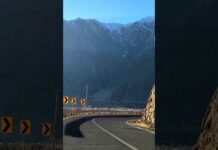GET FOLLOW-ALONG NOTEGUIDES for this video: https://bit.ly/3NRHzga
AP HEIMLER REVIEW GUIDE (formerly known as the Ultimate Review Packet):
+AP World Heimler Review Guide: https://bit.ly/46rfHH1
+AP Essay CRAM Course (DBQ, LEQ, SAQ Help): https://bit.ly/3XuwaWN
+Bundle Heimler Review Guide and Essay CRAM Course: https://bit.ly/3NVMQn5
HEIMLER’S HISTORY MERCH! https://bit.ly/3d3iejm
Tiktok: @steveheimler
Instagram: @heimlers_history
Heimler’s History DISCORD Server: https://discord.gg/heimlershistory
In this video Heimler takes you around Afro-Eurasia to consider the major networks of exchange that existed in 1200-1450. The three main trade networks were the Silk Roads, the Indian Ocean Trade Routes, and the Trans-Saharan trade.
The Silk Roads and the Trans-Saharan routes stretched across land and linked all of Afro-Eurasia. The Indian Ocean routes did the same, but along the sea.
Merchants travelled these routes carrying wares for sale, but arguably the goods they bought and sold was the least significant consequence of merchant activity. Merchants also brought cultures along with them on their journeys. When Muslim merchants showed up in East Africa, it wasn’t long before the Africans converted to Islam. When Buddhism travelled across trade routes it morphed both outwardly and inwardly.
So trade is among the most important activities in the transformation of cultures.
If you have any questions, please leave them in the comments and start a conversation.
















![silk-roads-indian-ocean-trans-saharan-routes-ap-world-history-review-unit-2-topics-1-3-4-ocean.jpg Silk Roads, Indian Ocean, & Trans-Saharan Routes [AP World History Review]—Unit 2 Topics 1, 3, 4 – Ocean](https://ourlovelynature.com/wp-content/uploads/2023/12/27444-silk-roads-indian-ocean-trans-saharan-routes-ap-world-history-review-unit-2-topics-1-3-4-ocean.jpg)





